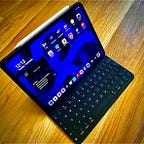Hi again. It’s been a while. And even though I promised it to myself, and to all of you back in January. I wrote two posts, and I stopped writing again. I simply got caught up in work and I kept postponing the blog writing. And look. It is June. :)
A lot of things changed since my last post. Work-wise, I am still working as a scientist, but my responsibilities changed a lot. I got promoted to a senior scientist position and, besides my usual work, I am managing a small team of scientist now.
I will try to be more consistent with my writing again. This time, I will be smarter and avoid making any promises. This post will be about writing smart notes and the next one about the tools that support this note taking system.
Active note taking is the core of building our knowledge base and connecting new and old ideas. The approache in this article relates to consuming some material and answering simple questions by finding evidence and summarizing the conclusion in order to make sure that we fully understand what we just consumed.
When writing notes, we should focus on three simple things:
- Q: question
- E: evidence
- C: conclusion
The first in the list is the question. This simply means that while reading some material, or revising research papers, listening to a course, going to a lecture or watching an interesting YouTube video, we should first focus on the main message. In other words, what is this material that we are consuming trying to explain and what question is it answering. Once we figure it out, we are half way there to understand the solution. That is why we should structure out notes in a way that covers the question part first.
Then, we move to the evidence, or the materials that support the solution for the main question. This part can be as technical or non-technical as you want it to be. You might want to first explain it in a language that will resonate with you later, but then you want to provide a bit more details to make sure that you fully understand the consumed content. From my experience, the additional detailed evidence can often be skipped. Notes don’t have to be art pieces. It is more important to connect the ideas that we consume to the rest of our knowledge base.
And then, we are left with the conclusion. I would always recommend writing a conclusion at the end of a note. This allows us to dig deeper into our understanding and to really think about the connections between this new idea and the rest of our knowledge base. This exercise also allows us to fully comprehend the broad concepts and precise insights that we have about the topic at hand.
The process described here helps us to form ideas from notes. Note taking should be active. Simple copy positing does not help our understanding and summarizing our knowledge (understanding) might help us connect the newly learned concepts with the knowledge that we gathered at some earlier stage.
